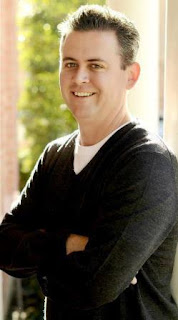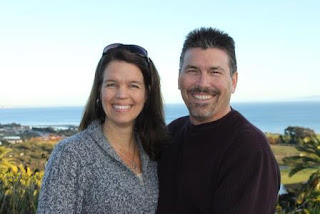Decline & Renewal, 17: Tim Spivey Guest Column
Editor's note: This is the last in our series of guest columns on
church decline. Starting later this week, articles will focus on renewal.
Our twelfth and final guest column is from Tim Spivey, a native of Southern California. Tim preaches for New Vintage Church in Escondido, California. He is a Pepperdine University graduate and has his DMin from Abilene Christian University. Tim is a prolific writer. You can find his blog posts at newvintageleadership.com. He has a keen eye for church health, and I think you’ll find his reflections to be helpful in our conversation about church decline.
Growing up in the Churches of Christ on the West Coast in the 1980s and 1990s was a blast. Churches of Christ during that era were growing and spiritually vibrant. Those who have moved into Southern California over the last fifteen years or so may find that hard to believe, but it’s true.
In Los Angeles, Orange, and San Diego Counties there were a number of churches with at least 300 in attendance. This allowed for churches to think big, work together, and cooperate. It wasn't uncommon for church leaders to golf together and cheer for one another's congregations authentically. As a teen, I remember the camps being full, the Youth Ministers being the best of friends, and a fluidity
> The Pepperdine YouthFest drew hundreds (500+).
> The teen/kids camps were full, as were the VBSs—Daybreak, SoCal, Kings Kamp, etc.
> The Mission Viejo Youth Rally would feed several hundred teens from around California, feature Jeff Walling preaching (among others), Jerome Williams leading singing, and some singing group—ranging from Acappella to Soul, and even hosting a Crystal Lewis concert (edgy for 1980’s or 1990’s Churches of Christ).
> The Day of Praise in the Bren Events Center at UC-Irvine drew more than a thousand for just an afternoon of praising God.
> The Soul-Winning Workshop, held in Orange County would draw more than a thousand.
> Then, there was Jubilee. Churches of Christ rented out Doheny Beach in Dana Point (a prime beach spot), and thousands (yes, that number is right), gathered for fellowship, and a series of concerts by the premier acappella groups of that time. It was like a Church of Christ Woodstock. It was a huge undertaking that couldn't sustain itself financially, but it was awesome to behold.
At the time, issues weren't an issue. Everyone seemed to find it easier to love each other than we do now. Perhaps it’s because we weren't as concerned about surviving as we are now. Survival instincts are powerful, and sadly, can trump vision at times--even for two decades.
Our twelfth and final guest column is from Tim Spivey, a native of Southern California. Tim preaches for New Vintage Church in Escondido, California. He is a Pepperdine University graduate and has his DMin from Abilene Christian University. Tim is a prolific writer. You can find his blog posts at newvintageleadership.com. He has a keen eye for church health, and I think you’ll find his reflections to be helpful in our conversation about church decline.
Growing up in the Churches of Christ on the West Coast in the 1980s and 1990s was a blast. Churches of Christ during that era were growing and spiritually vibrant. Those who have moved into Southern California over the last fifteen years or so may find that hard to believe, but it’s true.
In Los Angeles, Orange, and San Diego Counties there were a number of churches with at least 300 in attendance. This allowed for churches to think big, work together, and cooperate. It wasn't uncommon for church leaders to golf together and cheer for one another's congregations authentically. As a teen, I remember the camps being full, the Youth Ministers being the best of friends, and a fluidity
> The Pepperdine YouthFest drew hundreds (500+).
> The teen/kids camps were full, as were the VBSs—Daybreak, SoCal, Kings Kamp, etc.
> The Mission Viejo Youth Rally would feed several hundred teens from around California, feature Jeff Walling preaching (among others), Jerome Williams leading singing, and some singing group—ranging from Acappella to Soul, and even hosting a Crystal Lewis concert (edgy for 1980’s or 1990’s Churches of Christ).
> The Day of Praise in the Bren Events Center at UC-Irvine drew more than a thousand for just an afternoon of praising God.
> The Soul-Winning Workshop, held in Orange County would draw more than a thousand.
> Then, there was Jubilee. Churches of Christ rented out Doheny Beach in Dana Point (a prime beach spot), and thousands (yes, that number is right), gathered for fellowship, and a series of concerts by the premier acappella groups of that time. It was like a Church of Christ Woodstock. It was a huge undertaking that couldn't sustain itself financially, but it was awesome to behold.
At the time, issues weren't an issue. Everyone seemed to find it easier to love each other than we do now. Perhaps it’s because we weren't as concerned about surviving as we are now. Survival instincts are powerful, and sadly, can trump vision at times--even for two decades.
What happened? I've got my opinions on that. Leadership
failings. Doctrinal squabbles that exacerbated them. The departure of several
key ministers from the area to other parts of the country. I personally don’t
think the answer to our current malaise is to restore the eighties and
nineties. Perhaps we can learn from them, however. There was a heavy investment
in serving young people. Tradition was spandex (kept but not rigidly), and
there was a clear sense of what the weightier matters were. That sense was
strong enough we didn't spend a lot of time arguing about what they were. We
reserved that for the Pepperdine Bible Lectures platform and imported it from
Nashville and DFW. The other 51 weeks of the year, we simply tried
to live out the faith together—like a collection of small groups in the same
church. Though still imperfect, it was beautiful.
More than anything, there was a spirit of collaboration and
generosity among one another that allowed for vision at both the congregational
and “brotherhood” levels. Perhaps those aren't so far removed from us we can’t
easily access them again with a change of attitude and some intentionality.
Times have changed and we have some catching up to do. However, it begins with
a change of heart, not a change in technique.
------------------
Bio:
Tim Spivey is the lead minister for New Vintage Church in Escondido, California. It’s a church he helped launch in December, 2010. He is a graduate of Pepperdine University and Abilene Christian University (DMin). Tim and his wife Emily have three daughters, Anna, Olivia and Norah.
Tim Spivey is the lead minister for New Vintage Church in Escondido, California. It’s a church he helped launch in December, 2010. He is a graduate of Pepperdine University and Abilene Christian University (DMin). Tim and his wife Emily have three daughters, Anna, Olivia and Norah.




Comments